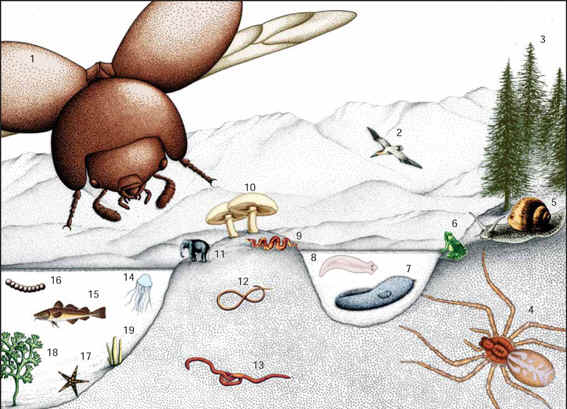Arthropods constitute most of the biodiversity: 1.2 million species out of a total of 1.8 million described species for all living organisms (see species scape below). It should be stressed that the number of currently described species probably represents less than 10% of the species actually living on Earth.
Arthropods are key regulators of ecosystem processes, such as herbivory, pollination, seed predation, seed dispersal, decomposition and soil formation.
Why should we bother about preserving countless small arthropods? These little things that rule the world are, together with humans in recent times, the movers and shakers of the world, tearing the vegetation down, cutting paths through the forest, and consuming most of the energy. The truth is that we need invertebrates but they dont need us! If invertebrate species were to disappear, most fishes, amphibians, birds, mammals, flowering plants and, ultimately, the human species would crash to extinction.
Arthropods are good predictors of environmental change due to their fine-grained response to the environment and their short life-cycle. They can be used as early warning organisms of changes in the ecosystem functioning (e.g., in response to climate change).
Arthropods form a large pool of potentially useful biochemical products for mankind (e.g., pharmaceuticals) and of biological control agents.

In this "species scape", the size of organisms is proportional to the number of species in the group they represent. 1. Insects: >1.000.000 species 2. Birds: 9.800 3. Higherp lants: 250.000 4. Noninsectan arthropods: 190.000 5. Molluscs: 50.000 6. Amphibians: 4.200 7. Protozoa: 40.000 8. Flatworms: 12.200 9. Reptiles: 6.500 10. Fungi: 69.000 11. Mammals: 4.327 12. Roundworms: 12.000 13. Earthworms: 12.000 14. Cnidaria and Ctenophora: 9.000 15. Monera: 4.800 16. Fish: 18.800 17. Starfish: 6.100 18. Algae: 40.000 19. Sponges: 5.000.

